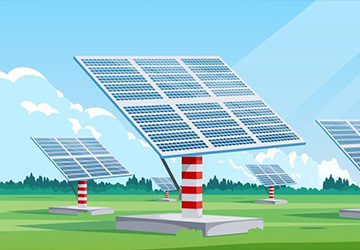Top 6 Trends That Will Shape The Future Of The Industrial Pump Market
Top 6 Trends That Will Shape The Future Of The Industrial Pump Market The industrial pump market plays a vital role in various sectors, including manufacturing, oil and gas, chemical processing, water treatment, and more. These pumps are responsible for transferring liquids, boosting pressure, and circulating fluids making them essential components in many industrial processes. According to a research report published by Spherical Insights, the Global Industrial Pumps Market Size is Expected to reach USD 100.76 Billion by 2032, at a CAGR of 4.9% during the forecast period of 2022 -2032. As per the Mordor Intelligence report, the Indian industrial pumps market is projected to reach USD 1140.5 Million in the next five years, registering a CAGR of over 4.8% during the forecast period of 2023-2028. Centrifugal pumps have emerged as the dominant force in the industrial pumps market accounting for around 64.3% market share in 2022. Asia-Pacific region has emerged as a dominant player in the industrial pumps market with more than 47.3% revenue share in 2022. As the demand for efficient and sustainable solutions grows, the industrial pump market is experiencing significant transformations. In this article, we will explore the key trends shaping the future of the industrial pump market and how they are revolutionizing the industry. Top Trends Shaping the Future of the Industrial Pump Market 1. Digitization of Pumps: How the Internet of Things (IoT) is Revolutionizing the Industry The digitization of pumps is one of the most significant trends shaping the future of the industrial pump market. With the advent of the Internet of Things (IoT), pumps are now equipped with sensors and connectivity capabilities, allowing them to collect and transmit valuable data. This data can be used to monitor pump performance, detect potential issues, and optimize maintenance schedules By leveraging IoT technology, industrial pump manufacturers and operators can improve efficiency, reduce downtime, and minimize operational costs. Real-time monitoring and predictive maintenance enable proactive interventions, preventing costly breakdowns and maximizing the lifespan of pumps. Furthermore, the data collected from IoT-connected pumps can be analyzed to identify patterns and insights, leading to continuous improvement and innovation in the industry. 2. Variable Speed Flow Controller: Enhancing Efficiency and Control in Industrial Pumps Another trend driving the future of the industrial pump market is the adoption of variable-speed flow controllers. Traditionally, pumps operate at a fixed speed, resulting in constant flow rates regardless of the demand. However, this approach is often inefficient and leads to unnecessary energy consumption. Variable speed flow controllers allow pumps to adjust their speed based on the required flow rate, resulting in significant energy savings. By matching the pump’s output to the demand, operators can optimize performance while reducing power consumption. This not only improves efficiency but also enhances control over the pumping system, as adjustments can be made in real time to meet changing requirements. 3. Digital Twins: The Virtual Representation of Pumps and Its Impact on the Industry Digital twins are virtual representations of physical assets, such as pumps, that enable real-time monitoring, analysis, and simulation. By creating a digital twin of a pump, operators can gain insights into its performance, identify potential issues, and optimize maintenance strategies. This technology allows for predictive maintenance, reducing downtime and improving overall operational efficiency. Digital twins also enable operators to simulate different operating conditions, evaluate performance under various scenarios, and make informed decisions. By leveraging data from the digital twin, operators can optimize pump performance, reduce energy consumption, and improve the overall reliability of the pumping system. As the industrial pump market embraces digitalization, digital twins are becoming increasingly valuable tools for manufacturers, operators, and maintenance personnel. 4. Augmented Reality (AR) and Virtual Reality (VR): Transforming Pump Maintenance and Training Augmented reality (AR) and virtual reality (VR) technologies are transforming pump maintenance and training in the industrial pump market. AR overlays digital information onto the real world, while VR creates a fully immersive virtual environment. These technologies offer significant benefits in terms of efficiency, safety, and training effectiveness. AR can provide real-time guidance and information to maintenance technicians, allowing them to visualize pump components, access manuals, and receive step-by-step instructions. This improves the accuracy and speed of maintenance tasks, reducing downtime and increasing operational efficiency. VR, on the other hand, enables realistic and interactive training simulations, allowing operators to practice pump operations and troubleshooting in a risk-free environment. 5. 3D Modelling: Improving Design and Optimization in the Industrial Pump Market The use of 3D modeling in the industrial pump market has revolutionized the design and optimization process. By creating virtual models of pumps, engineers can visualize different configurations, test performance, and identify potential issues before manufacturing. This reduces the time and cost associated with physical prototyping and allows for rapid iteration and improvement. 3D modeling also enables engineers to optimize pump designs for efficiency, reliability, and durability. By simulating fluid flow, heat transfer, and structural analysis, engineers can identify areas for improvement and make informed design decisions. Furthermore, 3D modeling facilitates collaboration between different teams, such as design, manufacturing, and maintenance, leading to better overall pump performance and customer satisfaction. 6. AI and ML in Pumps: Leveraging Artificial Intelligence and Machine Learning for Enhanced Performance Artificial intelligence (AI) and machine learning (ML) technologies are increasingly being applied in the industrial pump market to enhance performance and efficiency. AI and ML algorithms can analyze vast amounts of data collected from pumps and identify patterns, anomalies, and optimization opportunities. By leveraging AI and ML, pumps can autonomously adjust their operations to optimize efficiency, reduce energy consumption, and prevent failures. These technologies enable predictive maintenance, allowing operators to detect potential issues before they escalate, minimizing downtime and maximizing system reliability. Additionally, AI and ML can help optimize pump configurations and control strategies, leading to improved performance and cost savings Embracing the Future of the Industrial Pump Market The industrial pump market is at the forefront of technological advancements that are shaping its future. From the digitization of pumps and the adoption of IoT to the utilization











